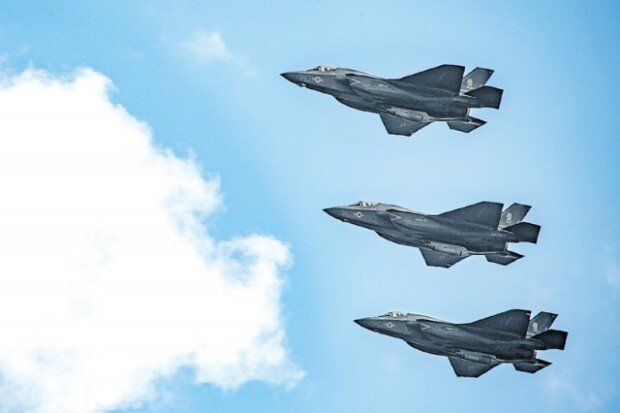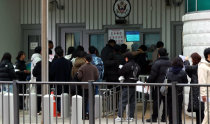F-35B stealth fighter to arrive on Korean peninsula
F-35B stealth fighter to arrive on Korean peninsula
Posted October. 18, 2022 07:37,
Updated October. 18, 2022 07:37

South Korea and the United States will conduct joint air drills on the Korean peninsula at the end of this month with 250 military aircraft. What is notable is that an F-35B stealth fighter from MCAS Iwakuni, a United States Marine Corps air station, will join the drill on the peninsula in four years and ten months. The Republic of Korea Air Force (ROKAF), too, will use F-35A fighters. Therefore, the drill will be joined by many five-generation cutting-edge fighters of the two countries, which can infiltrate North Korea air stealthily and attack major facilities of the regime. Observers say this is a warning message to the North which is just about to carry out its seventh nuclear test, and a signal of the Yoon Suk-yeol administration to strengthen extended deterrence.
According to The Dong-A Ilbo’s report on Monday, 140 of Korea’s military aircraft, such as F-35A, F-15K, and KF-16, and a hundred U.S. military aircraft, including F-35B and F-16, will be mobilized for the five-day Comprehensive Combat Readiness Training from October 31 to November 4.
This is the second time to deploy U.S. F-35 on the Korean peninsula since the inauguration of the Yoon administration. In the exercise in July, six US Air Force F-25 A aircraft from Eielson Air Force Base arrived in Korea to conduct a joint exercise with Korea’s F-35 A. During July’s drill, 30 aircraft from the South and the U.S. joined, but now, the size of the drill is expanded eightfold.
In the face of North Korea’s series of grave provocations, including the sixth nuclear test and launching ICBM, South Korea and the United States responded by deploying 260 military aircraft in December 2017. The best strategic assets of the U.S., such as F-35, B-1B, and F-22, gathered on the Korean peninsula. This time, the two countries will also conduct a large drill comparable to that of 2017 by mobilizing their strategic assets. The military source highlighted that “the size of the drill is not irrelevant to the current situation where North Korea increases military threats against South Korea and the U.S. with the recent provocations of launching IRBM and engaging in local provocations.”
Kyu-Jin Shin newjin@donga.com




![화장실 갇혔을 때 생존법…“최후에는 변기뚜껑” [알쓸톡]](https://dimg.donga.com/c/138/175/90/1/wps/NEWS/IMAGE/2025/12/26/133042007.3.png)


